Most equestrians are not frequent stretchers. For me, this means after 20 years of saddle time, I have incredibly tight hips.
Kim Syma, co-owner of Revolution Studio, says anyone can benefit from yoga. She chose three poses that are especially beneficial for equestrians.
Before performing any of these poses, make sure you’re warmed up. If you’ve already ridden your horse, you are probably good to go. If you are getting ready to ride, take a quick jog around the barn or even carry a bag of grain up and down the aisle. You don’t want to injure yourself by stretching before your muscles are ready.
“The more you stretch and take care of your body, the longer you’ll be able to do equestrian sports and feel good while doing so,” says Syma. “It’s amazing what a little bit of yoga can do in your life.”
Exercise 1: Supta Baddha Konasana
“Supta Baddha Konasana is a restorative pose,” explains Syma. “This is one of my favorites. You can do this before or after a ride.”
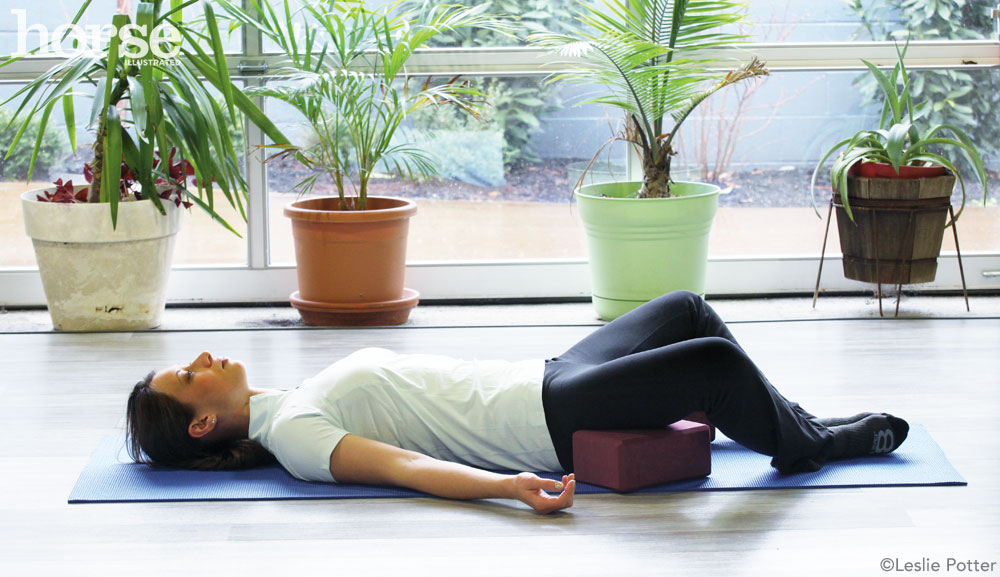
Supta Baddha Konasana
For this pose, lie on your back with the soles of your feet together. Draw the soles of your feet toward your body so that your knees open out into a butterfly position.
If you feel resistance in your hips or groin area, Syma advises that yoga blocks will help you modify the pose. For many, blocks may be useful under the area between your mid-thigh and knee.
“Lie with your hands by your side, palms open, close your eyes and just hang out,” Syma says. “This is a great posture for your hips.”
Exercise 2: Thread the Needle
Thread the Needle is an excellent position to move into from Supta Baddha Konasana (Exercise 1) for a deeper stretch. To seamlessly move into thread the needle, remain on your back. You will stretch one side of your body at a time.
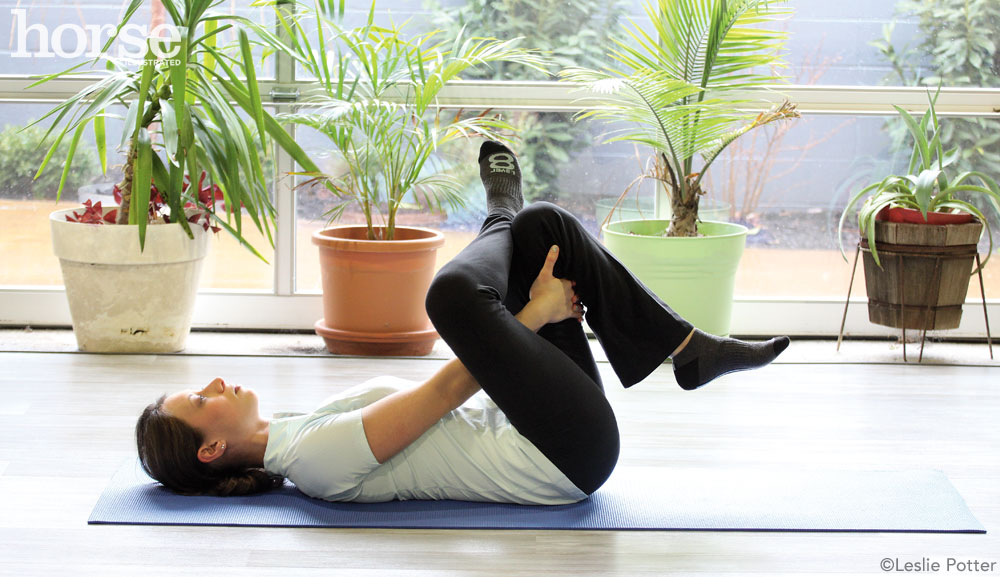
Thread the Needle
While on your back, place your right ankle on your left thigh, just above the knee. Draw your left knee up toward your chest, and loop your arms through the hole you created. Grab the back of your left thigh or left shin, and rest your head and shoulders on the ground.
“This is a great hip opener,” says Syma. “It’s gentle on the body.”
Exercise 3: Bound Angle Pose Baddha Konasana
Bound Angle Pose Baddha Konasana is a seated version of Supta Baddha Konasana.
“It’s great for stretching the inner thighs, groin and knees,” explains Syma.
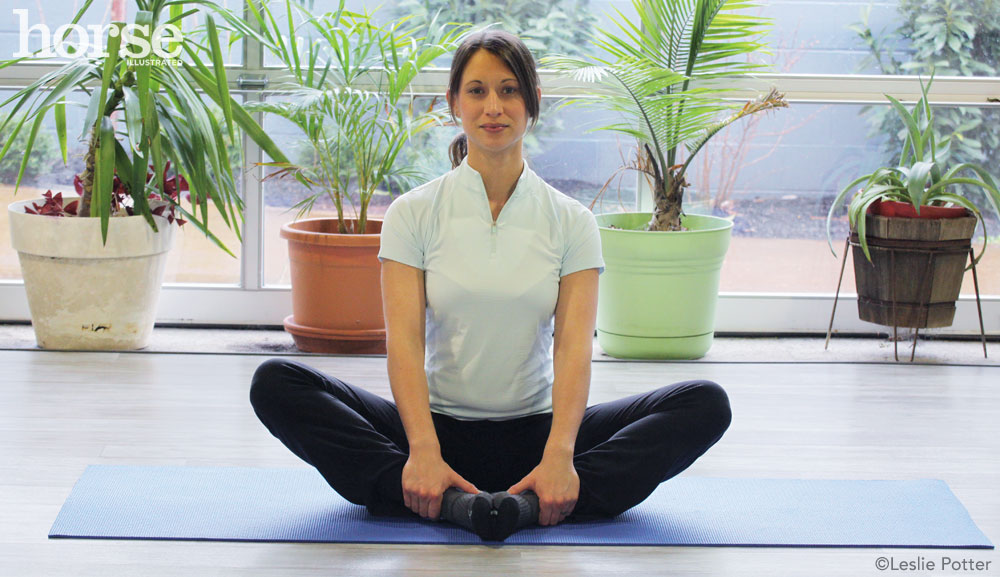
Bound Angle Pose Baddha Kosasana
While sitting, bring the soles of your feet together with your knees out wide, and draw the soles of your feet toward your body. If your knees don’t rest on the floor, place blocks under them. Cup your hands around your two big toes to create a foundation for the pose, and use the strength of your arms to draw your chest down to the floor. If it isn’t possible to hold your toes, clasp both hands around your ankle or shin on one side at a time.
“Play around with the distance,” Syma suggests. “To make this pose less intense, you can start with your legs in a diamond shape with distance between your body and your heels. As you bring your heels in closer toward the groin, the stretch gets deeper and more intense in the hips and groin area. If your knees come up, use the strength of your arms and elbows to gently press the knees down toward the earth.”
Benefits of Stretching
The benefits of stretching are undeniable. Whether you bring just one or all three of these poses into your daily routine, a regular stretching regimen is essential for any athlete.
“There are two athletes involved in equestrian sport, the horse and the rider,” says Syma. “Two athletes are working in tandem. If one athlete is caring for the other without putting the same sense of time and care into his or her own body, the two athletes can’t perform to their highest potential.
“Yoga supports the energetic transfer between horse and rider, and one of the biggest ways you communicate is the energy you bring to your interaction with your horse,” says Syma.
Get more equestrian fitness resources at HorseChannel.com/FitRider.
Thanks to Centered Lexington for providing the location for our yoga poses. www.centeredlex.org.
Allison Griest is a freelance writer based in Texas. Follow Allison on Twitter @allisongriest.
This article originally appeared in the May 2016 issue of Horse Illustrated magazine. Click here to subscribe!

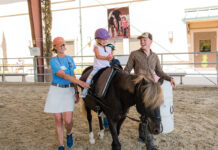

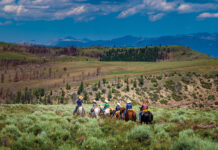

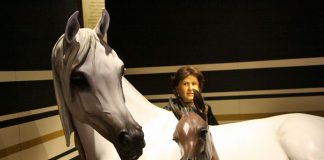
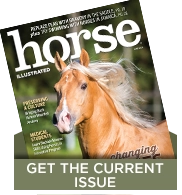
Great article !
I’m the creator of eYo – equiYoga and I teach yoga to riders on and off the horse.
You can take a look at my website : eyo.lachevalerie.org and Facebook page : equiYoga